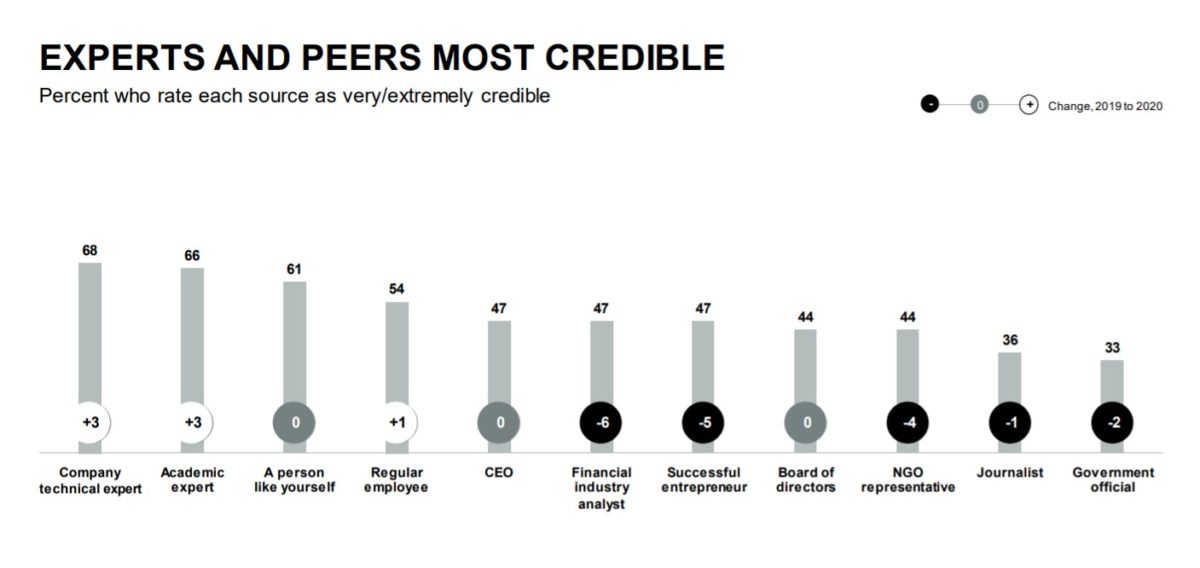This story first appeared in the Technical.ly DC daily email newsletter. We’re piloting something new this month: Each day, we’ll ship get our top story in full in the email newsletter before it goes live on the site in the following days. Plus, we’ll be asking for readers’ thoughts at the end. If they catch our eye, we might just add them to the piece that appears on the website. Want to get it in the newsletter first? Subscribe here to receive daily tech news in your inbox, five days a week.
For years, when a tech company told its story, the key question was, “How does this work?”
But, maybe it should have been asking, “Why does it matter?”
Even as recently as a decade ago, tech companies were stuck largely in the, for lack of a better term, technical: how something was built, what it does and how it adds to what already exists. For startups of the 2010s, it meant heading back to that original idea and figuring out what started it all. But, today, tech companies have a brand new set of standards to think about.
To that end, tech firms need to rethink how they tell their company’s story, said Pearson Cummings, EVP of technology corporate and public affairs at PR firm Edelman, and a Microsoft alum.
“COVID has driven companies to really, really affirm or rethink their place in the world,” Cummings, who is based in DC, told Technical.ly. “Particularly for the technology scene, it’s been an opportunity to say, ‘Wait a second, we’re doing something even more vital and more imperative,’ or, ‘We have to rethink what we’re doing because it needs to be vital in this new age.'”
Today, with priorities like diversity and inclusion, climate issues and digital equity, Cummings said consumers want more, and tech companies need to be telling the bigger story.
While it’s still important to provide that technical background, Cummings said companies have to be able to share their place in the world: who they’re helping, who they’re hurting and the impact of their products on the communities around them.
Finding the proper story is also more important than ever, Cummings said, because consumers and even business buyers care about the companies they’re doing business with. They want to see similar ideals, and even a focus on social issues. They want know how it might help the community, and they want said story told by the right person.
Here’s how you can tell yours.
Know when you’re ready.
According to Cummings, the ideal recipe is aligning what a company does with how it impacts society. To do this, he recommends figuring out who your top audience is, what they care about and building a story that connects with them.

Pearson Cummings. (Courtesy photo)
But before you go out and tell the story of your company, it’s important to know when you’re ready. Especially for newer startups, he said it’s more effective to talk about what’s already been achieved rather than future goals. That sometimes means holding off until an initative is finished.
“We tend to go out and talk about what we’re going to do versus go out and talk about what we’ve done, and that latter piece is so much more effective,” Cummings said. “So, for a lot of companies, I think it’s okay to say if you’re doing something, you’re building something, to go off and build it and really focus on that. Then come out and say, here’s what we’ve done right now, we’re ready to talk about that.”
To this end, it’s also important to make sure to tell an authentic story that’s true to the company’s philosophy and history. Those that tell a certain story before taking action or one that’s not true to what the company does will run into the issue of no one believing their story, or getting called out wherever their actions are lacking.
Cummings recommends asking yourself the following questions to help:
- Do I know my audience?
- Do I know what my business objectives are?
- Do I know what my story is?
Know where to tell it.
Once you’ve found the story, Cummings said it’s equally important to figure out the right path to tell it. But luckily, there’s plenty of room for trial and error to find the right one.
Be it on a company blog, Medium, LinkedIn or traditional media outlets, he notes that companies can put a story out there, get feedback and try again. In recent more times, he said, you get to test out what works.
In the past, “Everyone would build a story and we put all of our chips in one basket and say, all right, we’re going go out after this exclusive,” Cummings said. “If that didn’t happen, you were left holding the proverbial bag. Now, you can really go out and build your story and tell it through your own channel.”
Every company is a media company.
It’s important, however, to make sure to use the right tool for the right job. When telling a story from the company, it’s important to consider what you’re trying to achieve. Be it driving eyeballs to a website, boosting awareness or adding new customers, he said the desired overall outcome affects the storytelling strategy and approach. Once you’ve determined the overall outcome, it’s a matter of figuring out what platform is going to work best.
Cummings also noted how each founder and executive has a huge amount of control over how they tell the story of their company.
“Every company is a media company,” Cummings said. “Every company has the ability, if they want, to be a publisher of their story… there are so many ways to test, whereas before, 10 years ago, you didn’t have that mechanism. You didn’t have as much of a robust storytelling opportunity on your own platforms.”
Know who will tell it.
As crucial as it is to find the right space to tell a story, it’s also important to find the right person to tell it — and it’s not always the first person you’d guess.
While CEOs and founders might be the right person to tell the story of a company’s journey, he noted that company representatives shouldn’t overlook some of the folks closest to the products. When announcing a new launch, for example, he said it’s often more appealing to an audience to have the engineer that built it tell the story of the product. While there’s a role for senior executives, Cummings said, audiences often like to hear from people they can relate to, and who are passionate about what they just built.
In fact, according to the Edelman Trust Barometer 2020 report, audiences prefer company technical experts, academic experts, a person like themselves and regular employees over hearing from CEOs. Especially in technology, he noted, people often want to hear from the person that built the product.

A ranking of the most credible sources, according to audiences (Edelman 2020).
“By and large people want to hear from people like them,” Cummings said. “That’s fundamental. They don’t want to hear always from the most senior people, [because] trust in those people isn’t the highest. It’s the highest in people like them.”
Because of this, Cummings said it’s absolutely crucial not to ignore internal employee communications. Employees should have a firm understanding of the mission and what’s happening at a company, so they can tell the story fully, and in the correct context.
Edelman data, though, also found that many are already on the right track. According to its Future of Communications report 66% of senior-level communicators reporting an increased focus on employee communications and 54% ranking employee comms in the top five talent investment areas for the next year.
One potential solution? Actually building the digital and human platforms that can inform and track employee engagement and communications. Cummings and Edelman also recommend adding two-way communications for employers and employees so they’re in the know about what’s helping or hurting performance, trust and engagement.
To that end, he said, it all comes back to having an impactful, authentic story on why you do what you do.
“The purpose work that you’re doing needs to line up with the value proposition of the device that you deliver,” Cummings said. “[Tech companies need to] make sure that your purpose communications are authentic to who you are and what your company does, and the values that you live every day.”
Before you go...
Please consider supporting Technical.ly to keep our independent journalism strong. Unlike most business-focused media outlets, we don’t have a paywall. Instead, we count on your personal and organizational support.
Join our growing Slack community
Join 5,000 tech professionals and entrepreneurs in our community Slack today!

Entrepreneurship is changing, and so is the economic development behind it

Tech Hubs’ new $210M funding leaves Baltimore and Philly off the table

Here’s what to know before using AI to craft your brand’s social media posts


